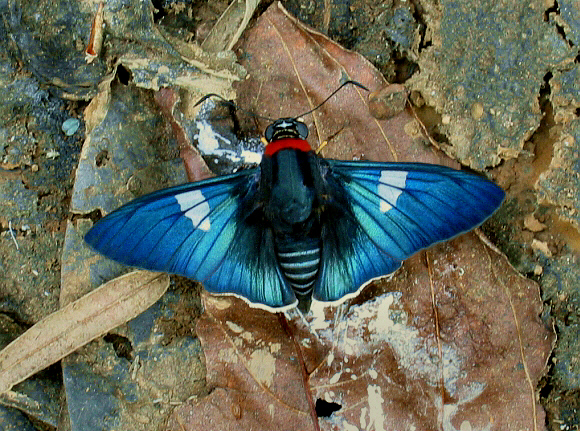
Introduction
The subfamily Pyrrhopyginae comprises 163 known species, most of which are found only in the tropical rainforests and cloudforests of South America, although a few reach as far north as Mexico, and a single species reaches Arizona. They are characterised by having bodies which are very large in proportion to the wings. Other characteristics include a massive muscular thorax, compressed abdominal segments, prominent eyes, and antennae with recurved clubs.
There are 17 genera, including Jemadia, Elbella, Pyrrhopyge, Mysarbia, Metardaris and Gunayan. The genus Gunayan comprises 3 species, the others being rhacia and timaeus. All were included for many years in Pyrrhopyge but were reclassified in 2002 by Mielke. The 3 Gunayan species are similar in appearance to certain Yanguna species ( note that Mielke constructed the name Gunayan as an anagram of Yanguna ).
Gunayan rubricollis is distributed throughout the Amazonian region.
Habitats
This species appears to be restricted to rainforest at altitudes between sea level and about 1000m.
Lifecycle
I have no data relating to the lifecycle of Gunayan.
Adult behaviour
The individual in the photograph above was found in shade, at bird droppings near an almost dry pool just after dawn in September ( late dry season ). Most other records I know of are also of males, either attending bird droppings or settling on sweaty clothing.
